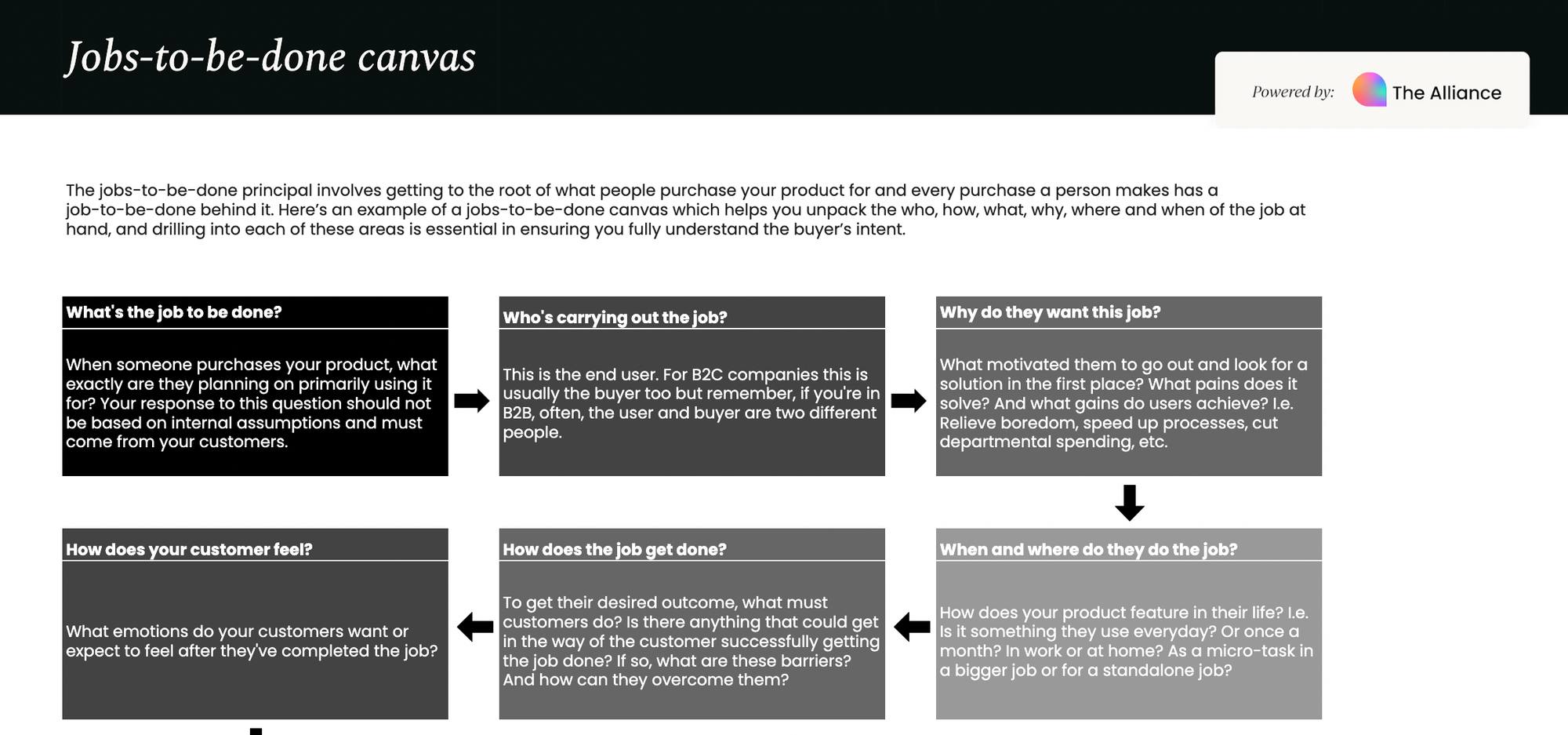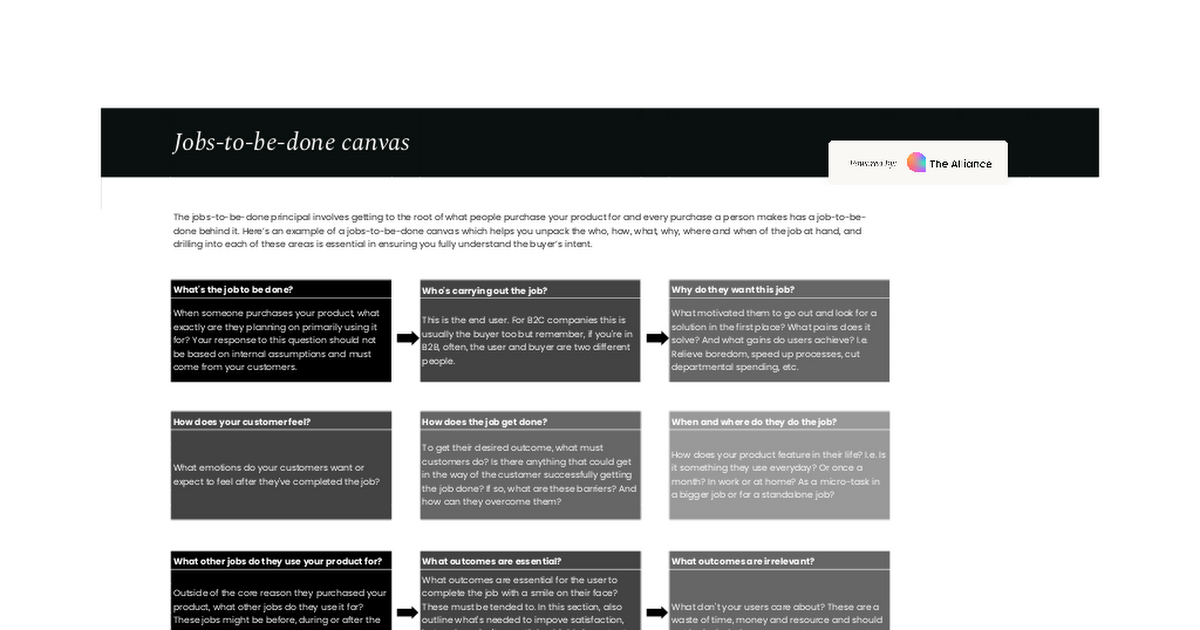What is a jobs-to-be-done template?
A jobs-to-be-done (JTBD) template is a strategic framework you can use to get to the root of why people purchase your product. Put another way, it's all about identifying and analyzing the reasons why customers hire a product or service to accomplish a specific job.
Unlike traditional persona-based approaches, the JTBD template focuses on the underlying goals and motivations of users, helping product marketers understand the true value and impact of their offerings. This approach allows businesses to uncover deeper insights into customer behavior, leading to more effective product development, marketing strategies, and overall customer satisfaction.
How to use this template
Using the jobs-to-be-done template involves several key steps to ensure you gather comprehensive insights about your customers' needs. Once you've downloaded the template, you can simply follow each step in the process. But before you do, it's important to think about the seven factors below:
- Identify the job: Start by clearly defining the job your customers are trying to get done. This involves understanding the problem they are facing and the outcome they desire.
- Who is the customer?: Determine who is buying your product or service to complete the job. This includes identifying key customer segments and their specific characteristics.
- Job steps: Break down the job into specific steps the customer takes to achieve their goal. This helps in understanding the process and identifying areas for improvement.
- Pain points and gains: Identify the challenges (pain points) customers face during each step and the benefits (gains) they experience when those challenges are overcome.
- Functional, emotional, and social dimensions: Analyze the job from functional (what the customer needs to get done), emotional (how the customer feels), and social (how the customer is perceived by others) perspectives. This holistic view ensures a thorough understanding of customer motivations.
- Contextual factors: Consider the external factors that influence the job, such as time, location, and circumstances. These factors can impact how and why customers choose your product or service.
- Solution fit: Evaluate how well your product or service fits the identified job and where there may be opportunities for improvement or innovation.
By following these steps, you can use the JTBD template to gain valuable insights into your customers' needs and create products and services that truly resonate with them.
Download your jobs-to-be-done template






















 Follow us on LinkedIn
Follow us on LinkedIn 

.svg?v=3c4c23cd72)